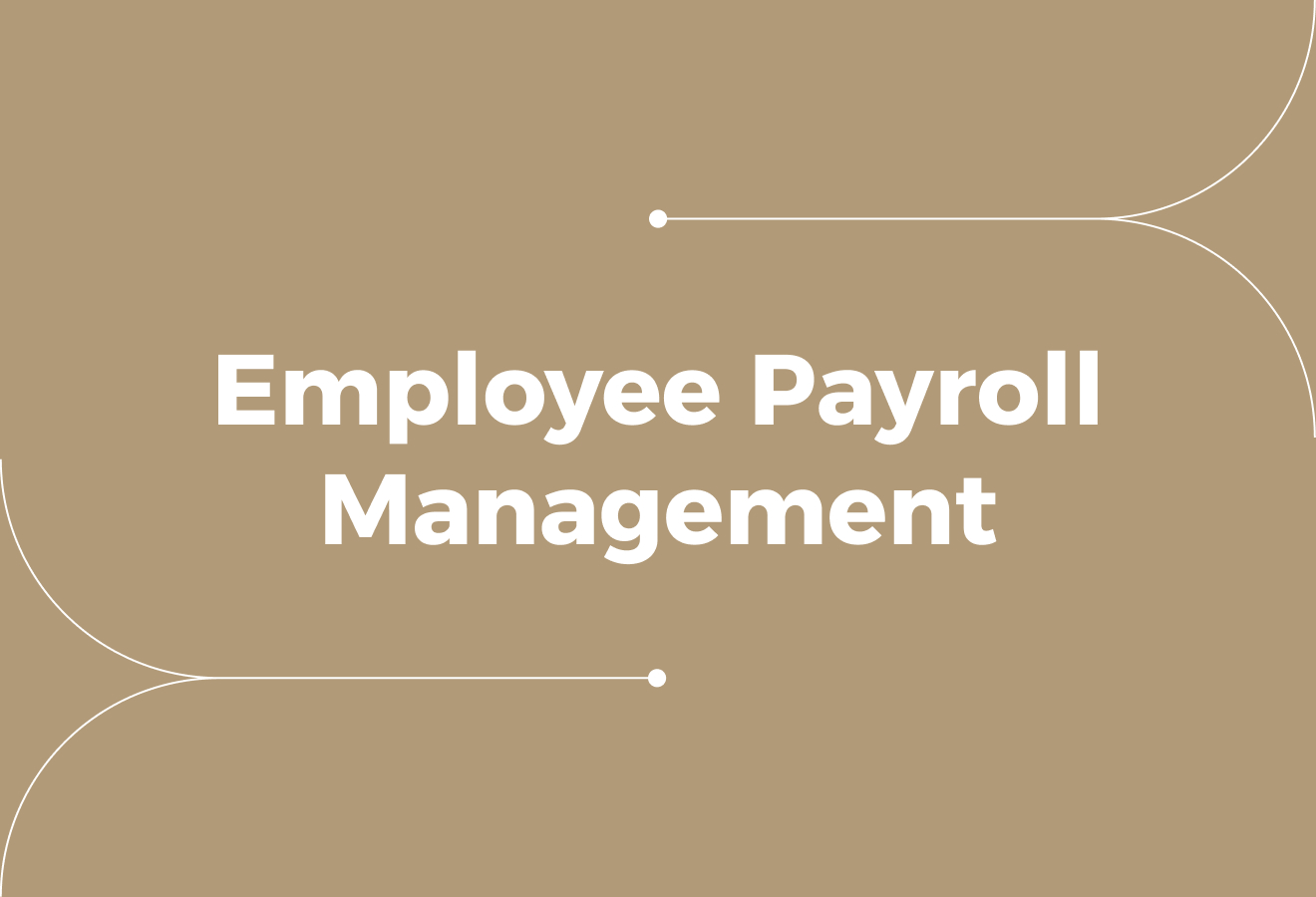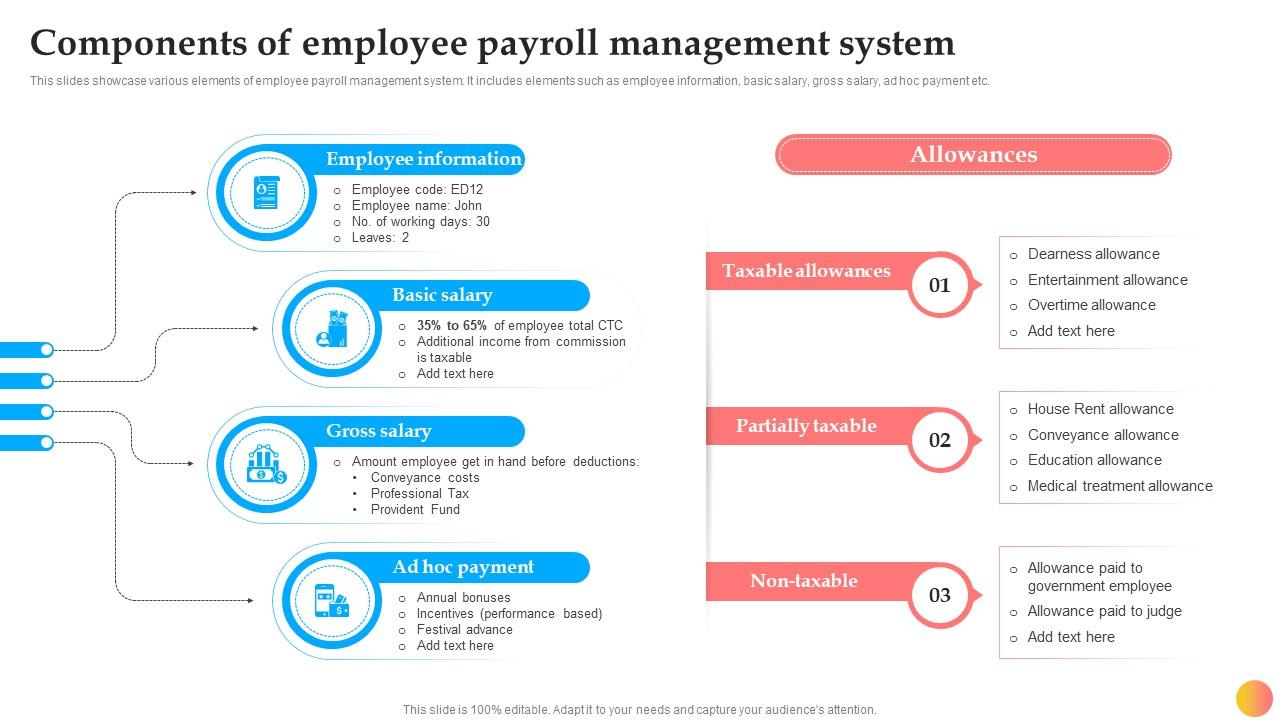Employee Payroll Management (Best Practices & Strategies For Businesses)

Employee Payroll Management (Best Practices & Strategies For Businesses)
At month-end, spreadsheets multiply, tax forms loom, and employees often ask when they will receive their pay. Employee Payroll Management is at the centre of payroll processing, time tracking, tax deductions, pay periods, and compliance. Automation of payroll can reduce stress by ensuring accurate wage calculations, timely pay schedules, and reliable payroll reporting. This guide explains how businesses can reduce payroll errors, simplify deductions and overtime calculations, and maintain accurate records for audits. This article covers best practices and strategies for employee payroll management, including payroll software selection, payroll reconciliation, payroll security, and benefits management.
Cercli's global HR system provides payroll automation, time tracking, benefits management, and payroll integration in a single platform. It helps businesses apply these practices efficiently and with reduced risk, while remaining compliant with UAE and regional tax rules.
What is Employee Payroll Management?
.jpg)
Employee payroll management is the set of processes an organisation uses to ensure staff receive the correct pay on time.
It covers:
- Collecting work and pay data
- Calculating gross and net pay
- Applying tax and other deductions
- Delivering payments to employees
Core payroll operations include:
- Time and attendance capture
- Wage calculation
- Overtime rules
- Tax deductions
- National insurance and pension contributions
- Statutory payments such as:
- Sick and maternity pay
- Benefits adjustments
These tasks form the core of payroll operations for each pay run. The function also creates:
- Payslips
- Maintains employee records
- Post entries to the general ledger
Compliance and Reporting
Compliance and reporting involve ensuring payroll is aligned with tax laws and employment regulations. In the UK, this includes:
- PAYE
- Real Time Information reporting to HMRC
- Year-end returns
- Audit-ready record keeping
Accurate tax calculations and timely filings reduce the risk of fines and enforcement action while supporting transparent payroll reporting. In the UAE, compliance includes WPS registration and adherence to local labour regulations.
Payroll System
Payroll systems and automation reduce manual calculation and repetitive work.
Software manages:
- Pay calculations
- Direct bank transfers
- Payslip generation and distribution
- Integration with HR
- Time and attendance
- Accounting systems
Automation also supports payroll schedules, batch payments, and exception handling, thereby improving efficiency and accuracy throughout the payroll cycle.
Controls and Security
Controls and security protect salary data, preventing errors and fraud. Access controls, segregation of duties, payroll reconciliation, and a clear audit trail help detect and correct mismatches between payroll records and bank payments.
Strong data protection and regular payroll audits maintain regulatory compliance and employee trust.
Employee Support
Employee-facing administration focuses on clarity and responsiveness.
To ensure staff remain informed, clear:
- Payslips
- Employee self-service portal
- Prompt handling of queries
- Procedures for changes to:
- Tax codes
- Deductions
- Attachment of Earnings Orders (AEOs)
Managing leave payments, expense reimbursement, and benefits adjustments is part of the everyday payroll service.
Payroll Metrics
Performance measurement tracks:
- Payroll accuracy
- Timeliness
- Cost
Typical indicators include:
- On-time payment rate
- Payroll error rate
- Cost per payslip
- Number of manual interventions
- Audit findings
Regular reconciliation between payroll totals and bank statements supports continuous improvement and helps organisations monitor payroll performance.
Key Components of Employee Payroll Management

Employee Data Management: Keep Records Accurate And Accessible
Collect personal details, contract terms, salary bands, job grades, tax IDs, and banking information, linking them to role histories and employment dates. Capture time and attendance, shift patterns, overtime, leave balances, and benefit entitlements to ensure payroll accurately reflects actual work and allowances.
Ownership of employee data should be clear. Enforce role-based access, encryption, secure backups, audit logs for every change, and comply with UAE data protection requirements.
Salary Calculation: Turn Hours And Rules Into Correct Pay
Calculate gross pay from base salary, hourly rates, or piecework, then add allowances, commissions, and bonuses. Apply overtime rules, shift premiums, and pro rata adjustments, and subtract statutory deductions such as:
- Income tax
- Social security
- Pension contributions
- Any salary sacrifice arrangements
Use consistent rounding, tax band logic, and payroll rules to produce net pay accurately for each pay cycle and support payroll reconciliation.
Compliance And Reporting: Meet Tax, Social Security, And Statutory Duties
- Withhold the correct payroll taxes
- Remit employer and employee social contributions
- Prepare mandatory returns for local authorities
For statutory inspections and internal reviews, track:
- Deadlines for filings
- Retain receipts for payments
- Produce audit-ready reports
Support for wage protection systems, declarations, and filings reduces the risk of penalties and keeps payroll aligned with UAE and regional labour regulations.
Payslip Generation: Transparent Breakdowns Employees Can Trust
Issue payslips that itemise gross pay, all deductions, employer contributions, and net pay, indicating pay period and year-to-date totals. Provide secure electronic access, multiple languages where needed, and clear naming or version control to show exactly what was issued on payday.
Make payslips searchable to allow employees and managers to resolve enquiries efficiently.
Salary Disbursement: Pay On Time Through Chosen Channels
Run approved pay periods and transfer funds by bank transfer, direct credit, or other local payment channels, supporting multicurrency transfers where required.
Include:
- Payment authorisation workflows
- Bank file generation
- Reconciliation tools
It flags failed or returned payments. Provide clear exception handling for rejected transfers and maintain audit trails for every payout.
Record Keeping: Build An Audit Trail And Support Reconciliation
With access controls and retention schedules, keep these documents in secure storage:
- Payroll journals
- Tax filings
- Payslip copies
- Contracts
- Leave records
- Supporting documents
For payroll audits:
- Link payroll entries to the general ledger
- Reconcile bank statements against pay periods
- Maintain version history
Retain documentation for the required statutory period and ensure backups and disaster recovery are in place.
Integrated Workforce and Payroll Management
Cercli supports companies in the UAE and the broader Middle East in managing their workforce, whether teams are local, remote, or spread across multiple countries. It provides a compliant and reliable solution for regional payroll and HR operations.
Cercli centralises onboarding, asset management, leave tracking, time-off calendars, payroll processing, and offboarding, providing HR teams with a single reference point for employee records and workforce information.
Related Reading
- Why Outsource Payroll Processing Services
- What Is Payroll Management in HR
- What Is the Payroll Tax Rate
- How Much Does Payroll Processing Cost
Benefits of Effective Employee Payroll Management

Accurate Pay Builds Trust
Timely and accurate pay periods build trust. When staff receive the correct pay on the agreed-upon date, morale improves and retention rates are higher. Accurate pay periods in line with UAE WPS regulations help maintain staff confidence and minimise disputes.
Payroll checks for pay periods, tax calculations, and overtime rules are performed each cycle to help prevent errors.
Regular Payroll Supports Employees
A predictable payroll schedule allows employees to plan rent, bills, and savings. Clear payslips and consistent wage calculation help staff manage household finances and loan applications. If monthly totals vary unexpectedly, hardship and disputes can arise.
Provide fixed pay dates and clear payslip breakdowns so staff can manage their finances effectively.
Payroll Transparency and Job Satisfaction
Transparency in deductions, allowances, and benefits management demonstrates respect. When staff can see how holiday pay, pension contributions, and tax were calculated, they feel fairly treated and remain engaged.
This reduces turnover and improves performance. Provide staff with access to payslip breakdowns and your policy on allowances, reducing queries and building trust.
Clarity Through Secure Portals
Payroll automation and employee self-service provide clarity and transparency. Secure portals for time and attendance, benefits, and pay history allow staff to verify their records and spot errors. Audit trails and payroll reporting support compliance and internal checks.
Staff can view timesheets, holiday records, and benefit choices through a secure portal, ensuring transparency in line with UAE employment standards.
Reducing Errors
Manual data entry and incorrect calculations can lead to costly payroll errors. Automated calculations, payroll reconciliation, and regular payroll audits help reduce errors and ensure compliance with tax regulations.
Validation checks and reconciliations should be completed before finalising each pay run.
9 Best Practices for Effective Employee Payroll Management

1. Standardise Payroll Workflows
Establish a streamlined payroll process that is consistent across all departments and locations. Set firm deadlines for timesheet submission and approval, align time and attendance records with pay periods, and use a central payroll management system so that approvers and payroll clerks follow the correct procedures.
Update workflows promptly when changes occur.
2. Open Payroll Visibility
Provide employees and payroll teams with secure access to:
- Payslips
- Tax deductions
- Adjustment histories
When staff can view pay details and submit queries efficiently, errors are identified and corrected within the same pay cycle. Employees should confirm their data each pay run to catch mismatches early.
3. Regular Payroll Audits
Schedule audits monthly or quarterly to check:
- Tax withholdings
- Overtime calculations
- Statutory contributions
Utilise payroll software audit features to identify anomalies and reconcile payroll registers with bank records. Record and resolve discrepancies systematically.
4. Unify Global Payroll Systems
Consolidate payroll data from every country into a single platform that applies local tax and labour rules, including WPS compliance in the UAE and GOSI in Saudi Arabia. A unified system reduces duplicate effort and avoids mismatched reports.
Comparing regions within the same dataset helps spot compliance gaps and processing bottlenecks.
5. Sync HR Data to Payroll
Integrate HR systems automatically with payroll so changes to:
- Salary
- Bank details
- Job status flow
Eliminate manual double entry to minimise errors and expedite payroll cycles. Train HR contacts on which fields trigger payroll changes to prevent unexpected adjustments.
6. Consolidate Multi-Vendor Payroll Data
Bring payroll feeds from different providers into one reporting hub to view total labour costs, benefits spend, and regional variances.
Centralised analytics enable consistent reporting on:
- Overtime trends
- Cost per head
- Vendor performance
7. Automate Validation, Reconciliation and Approvals
Deploy automated checks to compare gross to net pay, verify tax calculations, and match payroll totals to bank files before funds are transferred. Flagged items should be routed to the appropriate manager with automatic reminders.
These controls reduce late payments, allowing payroll staff to focus on exceptions that require judgment.
8. Stay Compliant with Local Laws and Data Protection
Track labour laws, payroll tax rules, and data protection obligations in all jurisdictions where you employ people. Utilise payroll tools that support statutory filings and adhere to security standards, such as GDPR. Ensure compliance with UAE labour and data protection regulations.
9. Classify Workers Correctly
Assess roles against legal tests for employee versus contractor status and document the basis for each classification.
Train hiring managers and HR on the criteria that determine:
- Payroll taxes
- Benefits eligibility
- Statutory contributions
Apply payroll and benefits adjustments immediately when classifications change.
Compliant Payroll and HR Across the Middle East
Cercli supports companies in the UAE and broader Middle East in managing their workforce, whether teams are local, remote, or spread across multiple countries.
It provides a compliant solution for HR operations, including:
- Onboarding
- Payroll processing
- Leave tracking
- Regional compliance
Payroll can be processed, WPS registrations handled in the UAE, GOSI contributions managed in Saudi Arabia, DEWS contributions completed, and employees or contractors paid across 150 countries using multicurrency payroll and Employer of Record services.
Related Reading
- How Does Payroll Processing Work
- AI in Payroll Processing
- Benefits of Payroll Outsourcing
- Payroll Automation Benefits
- Payroll Tax vs Income Tax
Technology’s Role in Streamlining Payroll

How Technology Reduces Payroll Workload
Cloud payroll software and payroll automation remove routine manual tasks from pay periods, reducing errors and saving time for payroll teams. Automated payroll processing integrates time and attendance, timesheets, and HRIS data, enabling seamless wage calculation, tax deductions, and payroll filing with minimal manual input.
This reduces payroll reconciliation work and provides managers with more transparent payroll reporting.
Online Benefits Management
Benefits management systems feed eligibility, deductions, and employer contributions directly into payroll. Integrating health insurance, mileage reimbursement, pension contributions, and stock option data reduces duplicate entries, speeds enrolment, and lowers mistakes in net pay.
Employee self-service portals allow staff to check payslips, update beneficiary details, and manage benefits from:
- A mobile device
- Reducing HR queries
- Keeping records accurate
Faster Onboarding for New Hires
Technology speeds up employee onboarding by combining:
- Digital forms
- Identity checks
- Learning management systems
Self-directed training modules and digital induction materials enable employers to update content without needing to redo paperwork. Faster onboarding ensures accurate payroll setup, including tax and bank details, and fewer adjustments to the first pay run.
Scheduling and Time Tracking
Modern scheduling and time management systems sync shift assignments, clocking data, and overtime rules with payroll software to calculate pay accurately. AI-assisted scheduling reduces shift conflicts.
Integrated time and attendance systems replace paper timesheets, flag overtime, and feed calculations directly into payroll routines, improving accuracy each pay period.
Remote Work Tools for Accurate Payroll
Remote and hybrid work expands the hiring pool and introduces complexity to payroll, particularly in terms of tax and compliance. Video conferencing, project management, and messaging tools, all integrated with workforce management and payroll systems, ensure that location-based pay rules and expense claims are applied accurately.
Biometric Checks and Payroll Security
Payroll systems utilise biometric ID and multi-factor authentication to safeguard access to payslips and payroll administration. Role-based access, password policies, and updated software reduce the risk of unauthorised changes.
Strong access controls maintain payroll data integrity and support compliance with payroll records and audit requirements.
AI for Payroll Efficiency
Machine learning helps automate:
- Tax code updates
- Detect payroll anomalies
- Speed reconciliation
AI can flag potential fraud, predict cash flow needs from payroll analytics, and suggest corrections to deduction codes. Automation frees payroll teams to focus on handling exceptions and maintaining audit trails that support compliance.
Internal Communications
HR tools combining messaging, reminders, and payroll notices reduce missed forms and late changes to pay. Targeted prompts help staff submit expense claims, update bank details, or confirm timesheets before cut-off. Messages can be tailored to staff who have not responded, improving payroll data accuracy.
Compliance, Reporting, and Audit Readiness
Automated compliance updates and integrated payroll reporting streamline the preparation of tax filings and statutory returns. Centralised payroll records, digital payslips, and audit logs reduce the time spent on reconciliation and responding to regulator queries.
Next Steps for Payroll Teams
Map your pay run end-to-end and identify repetitive data entry between time systems, HRIS, and payroll software. Prioritise secure single sign-on, employee self-service, and mobile access so staff can manage details independently.
Test AI or automation on high-volume, low-risk tasks such as tax table updates or routine payroll checks before scaling to more complex payroll analytics and fraud detection.
Book a Demonstration to Speak with Our Team about Our Global HR System
Cercli centralises employee payroll management, payroll processing, and HR operations, so teams no longer need to juggle spreadsheets and local vendors. You can run salary payments and bank transfer across the UAE, Saudi Arabia, and 150-plus countries while maintaining compliance with local payroll tax rules and statutory contributions.
Cercli provides a single system to process gross-to-net calculations and produce payslips on a predictable payroll cycle.
Compliant Payroll for UAE, Saudi, and Wider MENA Markets
Cercli embeds local payroll rules for wage calculation, tax deductions, end-of-service calculations, and social security contributions, ensuring that each payroll run adheres to the correct governance and tax requirements.
The platform handles payroll reconciliation and audits with built-in checks and audit trails, enabling finance and HR teams to efficiently validate payroll reports and statutory filings, thereby reducing errors and shortening payroll close times.
Global Contractor Payments and Multi-Currency Payroll
Make contractor payments and freelancer payouts in multiple currencies with payment rails that support bank transfers and local payment methods. Cercli automates contractor invoicing, verification, and tax deductions where required, maintaining records for contractor payments and reporting.
Contractors can be moved from manual payment to automated global payroll quickly.
HR Operations: Onboarding, Leave Tracking, and Asset Management
Employee onboarding, data management, timesheets, attendance tracking, and leave management are all connected to payroll, ensuring that benefits management and deductions are accurately reflected in each payroll cycle.
Asset tracking ties company equipment to employee records, reducing reconciliation work between HR operations and finance. This alignment ensures that payroll deductions and reimbursements are accurate, reflecting the actual asset status.
Payroll Automation, Integrations, and System Efficiency
Cercli integrates with HRIS, recruitment systems, time and attendance tools, and accounting platforms to eliminate duplicate data entry and speed up payroll processing. Use automated payslip distribution, electronic payroll reports, and payroll schedules to keep managers and employees informed.
Data flows seamlessly from onboarding to payroll, eliminating manual steps and saving time while improving accuracy.
Scalability from 25 to 500-Plus Employees with Local Expertise
Whether you manage a core local team or a distributed workforce, Cercli scales operations and payroll workflows as headcount grows. The platform supports country-specific payroll rules, multi-market payroll runs, and consolidated reporting for group-level finance.
Cross-border payroll can be managed through a single, compliant process that scales with your business.
Book a Demonstration to See Cercli in Action
Request a demonstration to explore the payroll software, payroll automation, payslip generation, and compliance features in your UAE or Saudi setup, and see how contractor payments and multi-currency payroll will work for your workforce.










